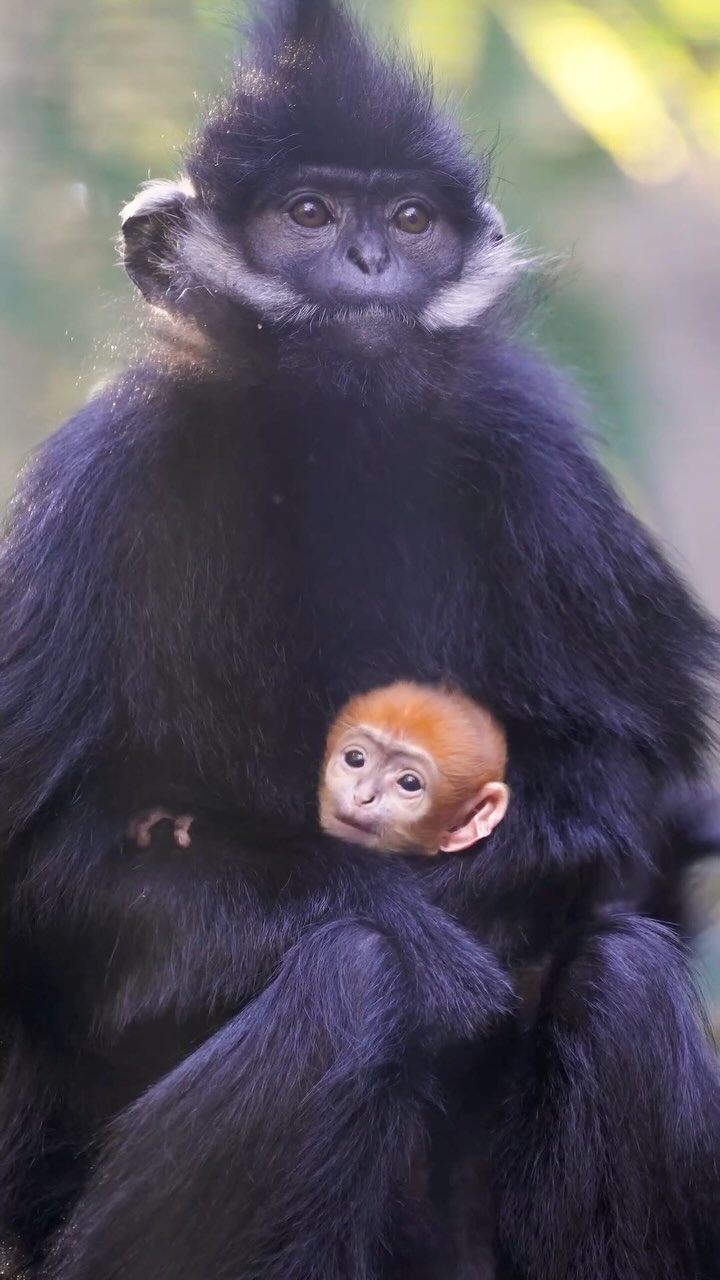- The birth of the orange François’ langur at San Diego Zoo and its significance.
- The biology and conservation status of François’ langurs.
- The role of zoos in wildlife conservation and education.
- Challenges in François’ langur conservation: habitat loss, hunting, and agricultural pressure.
- The science behind the color change in François’ langur infants.
In the vibrant habitat of François’ langurs, an extraordinary event unfolded recently at the San Diego Zoo. The welcome arrival of a new member—an effervescent, bright orange baby—has generated enthusiasm and support for conservation efforts. While visitors are charmed by the infant’s striking color, a dramatic transformation awaits, as the little one will eventually don the sleek black coat that characterizes adult François’ langurs.
François’ langurs command attention not only due to their distinctive appearance but also because of their precarious status in the wild. Subsequent populations have declined steeply, over 50% in the last 40 years, largely due to habitat destruction, poaching, and the encroachment of agriculture. Such a birth, therefore, serves as a pivotal point in the continuity of the species, a living testament to the resilience of life even amidst adversity.
Zoological institutions like the San Diego Zoo play an instrumental role in the narrative of wildlife conservation. They are venues for public amusement and serve as educational platforms, genetic reservoirs for breeding programs, and research centers for studying animal behavior, biology, and ecological interactions. By bringing rare species like the François’ langur into the public eye, zoos can stimulate a connection between visitors and wildlife, fostering a society more informed and invested in the natural world.
The radiance of the orange coat in newborn François’ langurs is a source of fascination. Scientifically, this pronounced coloration is theorized to strengthen the bond between the infant and the mother and other female members of the group that may assist in rearing the youngster, a phenomenon known as alloparenting. This unique coloring is temporary, with the bright orange hue gradually fading to the darker tones of its elders over the first few months of life.
Amidst the awe lies an urgent call to action as the François langur faces significant threats in its natural environment. Rampant deforestation coupled with the expansion of human agricultural activities has resulted in the loss of contiguous tracts of the langurs’ preferred habitat. Hunting poses a stark threat as well, with langurs targeted for traditional medicine and as a food source. While vital for human sustenance, agricultural practices often disturb the delicate balance of ecosystems, leading to further habitat fragmentation and degradation.
Zoo conservation programs work tirelessly to address these challenges. Through meticulous care, scientific research, and collaboration with international conservation organizations, zoos strive to bolster wild populations. Conservationists work alongside local communities to develop sustainable practices while anti-poaching and habitat restoration efforts involve a multifaceted approach to saving the François’ langur.
Treading cautiously through this intricate web of biological wonder and conservation challenges, the light-hearted naming of the orange infant as a “cutie” offers more than endearment; it symbolizes the hope and dedicated effort placed in each new birth. With continued support, research, and public engagement, there is a chance to reverse the fortunes of these captivating primates. The story of the François’ langur is one thread in the broader tapestry of our planet’s biodiversity, and it is a narrative that requires sustained attention and commitment from us all.
*****
Source Description
Orange you a cutie 🧡
Meili, a François’ langur, gave birth to a bright orange bundle of joy, the first at San Diego Zoo in five years. You won’t have trouble spotting the baby for now, but it will soon turn black and grow a little more facial hair like the rest of the family.
Native to Southwestern China and Northeastern Vietnam, François’ langurs are endangered due to hunting, habitat loss and agricultural expansion, which have reduced their population by over 50% in the last four decades. Every birth is a beacon of hope for their species.
class=”instagram-media” data-instgrm-permalink=”https://www.instagram.com/reel/C7FGX9PA5Dt/” data-instgrm-version=”14″ style=” background: border:0; border-radius:3px; box-shadow:0 0 1px 0 rgba(0,0,0,0.5),0 1px 10px 0 rgba(0,0,0,0.15); margin: 1px; max-width:540px; min-width:326px; padding:0; width:99.375%; width:-webkit-calc(100% – 2px); width:calc(100% – 2px);”>


